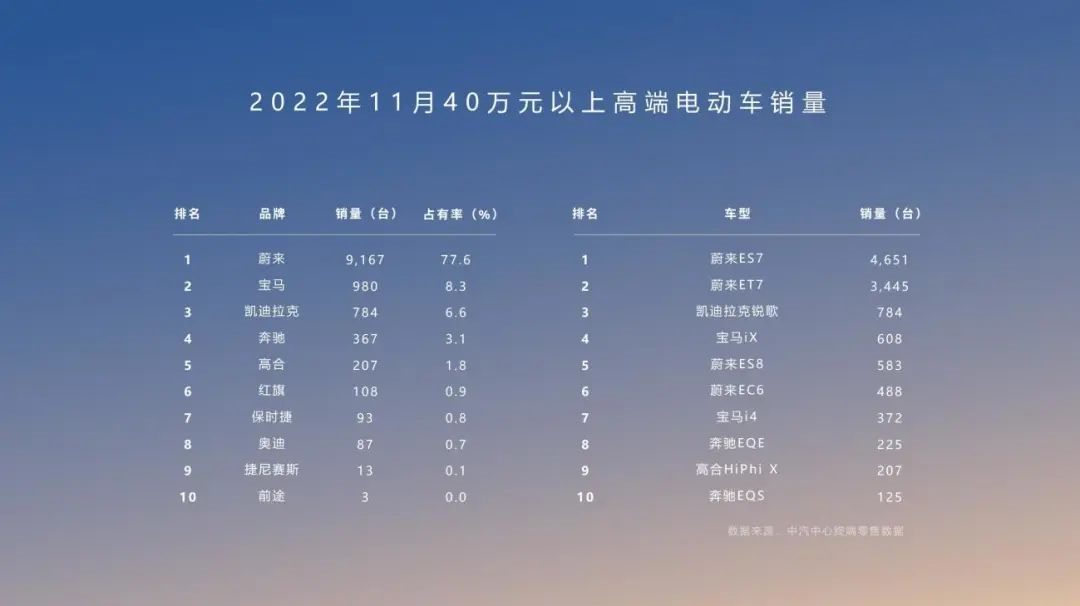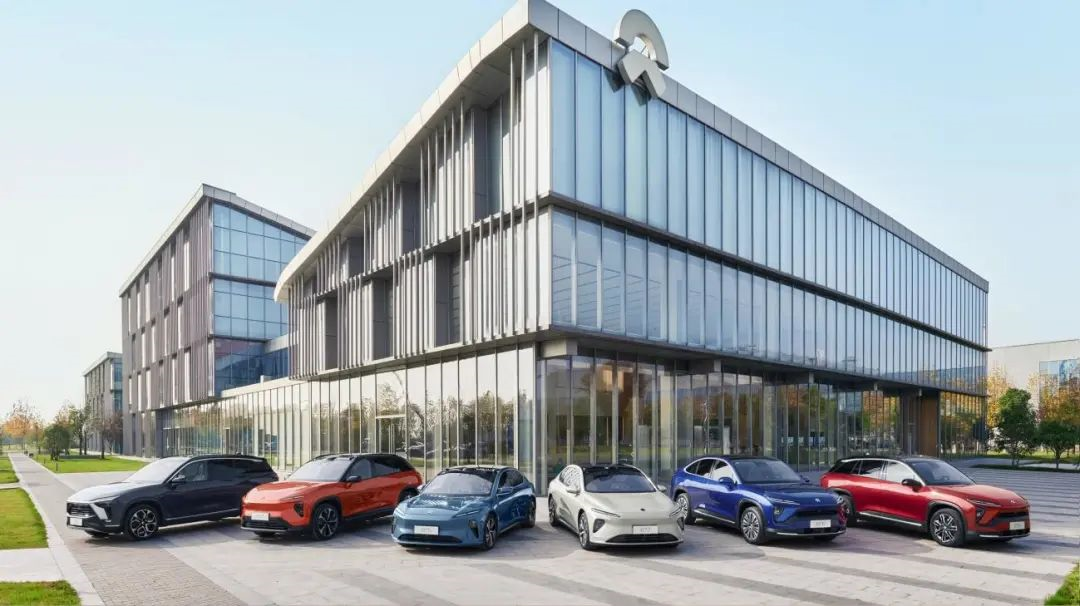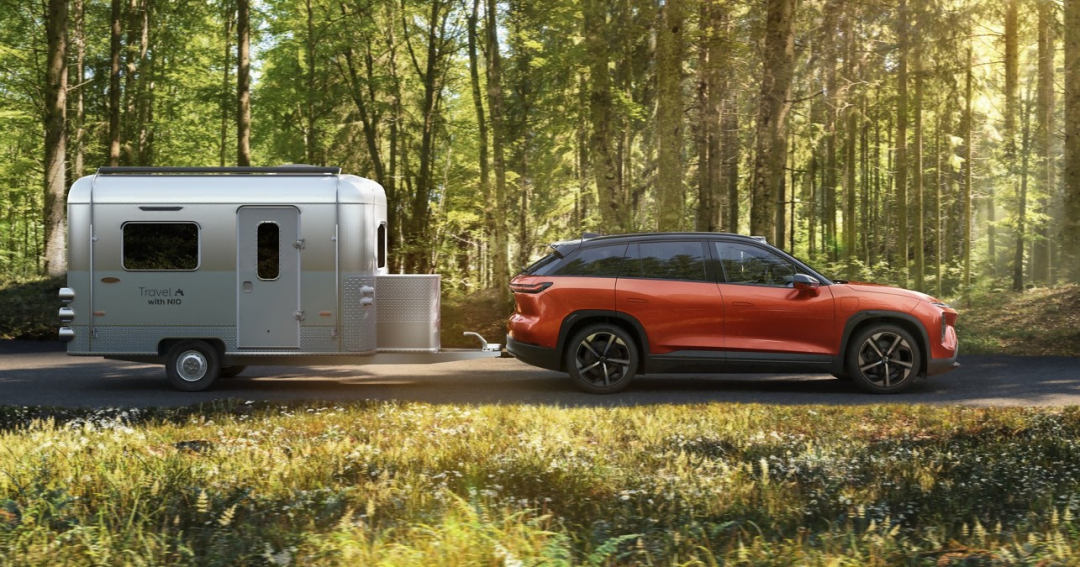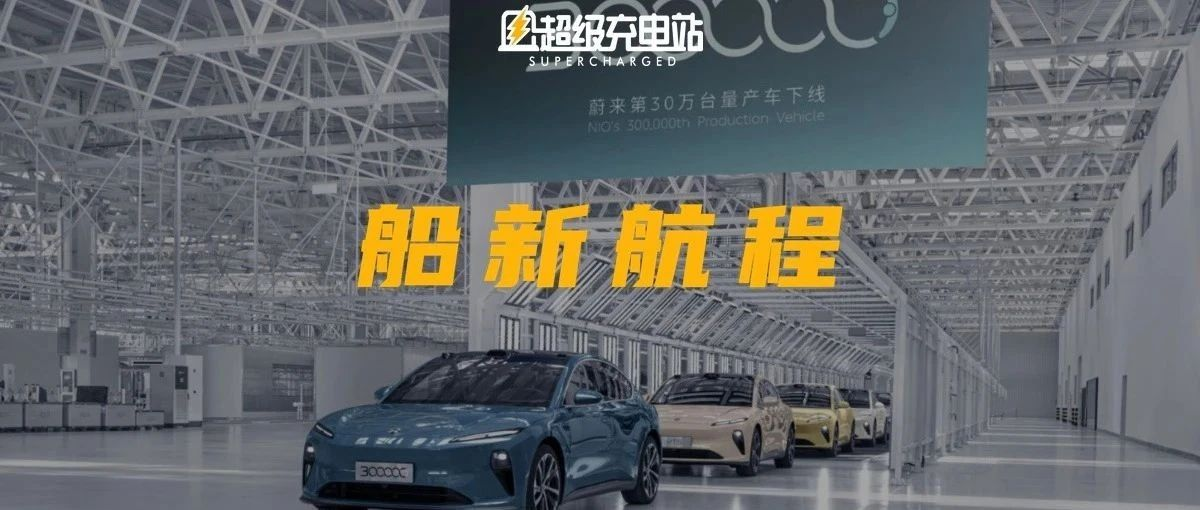Author: Chang Yan
The story of China’s new car manufacturing industry is like a journey of the Age of Discovery.
NIO’s annual communication meetings are always infused with a sense of the sea.
At the end of 2020, amidst the sea breeze in Hainan, I heard NIO share their systematic company thinking for the first time.
At the end of 2021, Qin Lihong suddenly produced a “compass” at the communication meeting, resembling a magical tool used by an ocean-going exploration ship in deep waters to ensure the correct direction.
And before the communication meeting at the end of 2022, due to the over-excitement at the scene of NIO Berlin, “going global” and a series of overseas stories seemed to have become the key words for NIO’s work this year.
Our long-term attention to NIO is like watching a brave cruise ship sail into the magnificent ocean. For Chinese people, sailing includes the sunny side of beautiful scenery and treasure, as well as the dark side of danger and confusion. However, the driving force that supports the crew to move forward and the structural power that ensures the ship always has combat power against the environment are the focus of every maritime adventure story.
Potential Energy
In 1492, Columbus set sail to America for the first time. Because he encountered the North Atlantic cold current, his team underwent storms and took nearly 40 days to complete the expedition. One year later, having mastered the laws of the Canaries cold current and the North Equatorial warm current, he spent only half the time to complete the same journey.
Working with the current leads to twice the result with half the effort.
In China, a number that can also be prorated in “times” is the penetration rate of new energy vehicles.
For the whole of 2020, China’s total penetration rate for new energy vehicles was only 5.6%. In 2021, this number rose rapidly to 17%. The latest data shows that in October 2022, the monthly penetration rate has already reached 33%.
Amidst such rapid growth, Qin Lihong said, “For today’s familiar electric vehicle brands, regardless of whether they are traditional companies moving into new energy, or newly established companies, whether they are from China or Europe and America, except for a very few, most of them will be doing very well a few years from now.” However, it cannot be denied that the brands that bet on electrification first have already started to reap the benefits of this trend.

The numbers show NIO’s performance growth clearly. It took nearly three years for NIO to complete the first batch of 100,000 vehicles, but in just one year of this current year, we have witnessed the occurrence of two milestones: the 200,000th car was produced in April, and on the day of communication with Qin Lihong, the 300,000th vehicle arrived as expected. In the luxury pure electric vehicle market with a price tag above RMB 400,000, where NIO has relatively strong presence, its market share has reached as much as 77%.

But this is not only good news, it is also an apparent bottleneck that has come. “How can our brand continue to move up? Apart from working with the market to advance and retreat, we actually don’t have that much competitive edge”, said Qin Lihong.
“These few months, including the next one to three years, is a very important window for us to refresh our understanding of the market situation.”
As far as NIO is concerned, Qin Lihong thinks that the “head-to-head battle with BBA has already begun”, and compared with BBA’s product lineup, there is still room for improvement in NIO’s product lineup. “I think that if we want to establish ourselves as a high-end brand, we need a certain level of product diversity, and that’s something that we learned from our experience”, Qin said. Qin’s judgment comes from his comparison of Porsche and VW. Porsche offers a richer selection comparatively.

It can be said that NIO chose the latter between popular products and rich product lines. However, this diversification is based on a high level of platformization, which achieves specific user experience segmentation by highly integrating core capabilities, as well as investment and cost savings in key R&D.
“The first point is that it will bring incremental benefits, but the size of the benefits brought by each car is different. The second point is that it poses challenges and complexity to us, but I think that the way to respond to challenges is not simply to do subtraction, but to do systematic thinking,” Qin said.The growing trend of NIO also realizes that it is difficult to further increase market share under the current level of market penetration. “Even if I increase my market share from 77% to over 80%, its value is not that significant,” said NIO.
As NIO has stated that ET5 and other models of the same level will be the most entry-level vehicles of the brand, it means that in the face of the more mainstream market below CNY 300,000, NIO will use a new brand with technological inheritance and independent brand differentiation to complete this strategy. “So we need to insert a brand into the mid-range mainstream market. This is the source of our increment.”
These are probably what will happen in the next few years for NIO.
Reefs
In “Navigation,” there is a saying, “It’s more important to figure out the reefs than to know which way to go.”
The story of the Titanic tells us that at least we should not die first, regardless of whether the mission is successful or not.
Interestingly, in the Q&A session after the face-to-face communication, most of the media’s questions focused on “challenges,” “problems,” and “risks.” Qin Lihong’s answers to these questions are more like the basis for adhering to one’s own judgment and supplementing the competitiveness of the NIO system, which deserves to be mentioned in advance.
When talking about risks, Qin Lihong is most worried about the potential risk of the team forgetting its original intention. On the one hand, the market is full of uncertainties, “Today’s market is too complicated. China’s competition is too fierce, and Chinese competitors are too agile.” On the other hand, new energy vehicles are a huge long-cycle industry change. How to make good macro-level prospects while maintaining caution in the micro-level and “eliminating our inner luck” is also a challenge.
Heading
2022 is not only a year of exploration for NIO, but also a time of complex changes for the entire new energy industry, with many long-term and important issues still high in frequency, such as “chip problems, global legal mutual recognition issues, the increasingly strict data security protections of countries, and the relationship between the data platforms needed for intelligent vehicles and the need for global connectivity.”
Uncertainty poses many challenges for NIO in 2022.
This year’s frequent epidemic control measures, combined with NIO’s increasingly rich product portfolio, have also added more pressure to NIO’s supply chain management during product ramp-up. “NIO’s average number of chips per car exceeds 1,000, with hundreds of categories. You really don’t know where the next problem will be, there is some unpredictability,” and “supply chain challenges are challenges that the entire industry faces globally, and we must strive for it. The entire industry may also need to have some updated capabilities.”
Even international issues have begun to become the topic of concern for Chinese automakers, such as the rise in European electricity prices and the cancellation of subsidies in some staunchly electric vehicle countries, which have led to the industry’s judgment that electric vehicle promotion may be hindered. However, Qin Lihong said, “Electric vehicles are gradually becoming mainstream in various European countries, and this trend is unstoppable. If it continues to develop in such expensive electricity conditions, I believe it will only accelerate when electricity prices return to normal levels. Companies that make strategic misjudgments because of these isolated setbacks will pay the price.”
Of course, he is also calling on everyone not to over-emphasize the universality of industry pressure, such as the matter of organizational restructuring, which “does not need to follow suit.” “The rhythm of each company is different, and organizational restructuring is not necessary for every company.” Similar principles apply to other issues.Careful consideration and quick action are Qin Lihong’s approach to dealing with potential problems when facing them, according to the NIO philosophy.
For example, in terms of work issues that lack experience, “we must treat them more seriously in the future”, management, the larger the company, the more cautious the business decision-making process, which may be more responsible to products, users, and the outside world.
Also, for where the high ground lies in the future electric vehicle industry, each company needs to make its own judgment, “Where are the key strategic values that will affect the electric vehicle industry chain in the next ten years? Each company is forming its own opinion. To be very frank, today’s judgment will determine everyone’s good or bad, life and death in ten years. It is not only a strategic fulcrum but also a large bet.”
“Our only way is to be firm and act fast, without wavering in direction. The most tragic thing in the world is that Li Kui is killed by Li Gui. Don’t be that kind of person. Others defeat us with our own methods. We themselves are very aware of this. The internal team also frequently reminds us. The only way is that martial arts in the world rely on speed, so we must remain steadfast.”
“I think that maybe the lack of consensus might be our best opportunity to first turn it into a moat before considering it.”
“I think this is the issue that requires strategic determination, execution, and wisdom of our entire company.”
Compass
“Pirates of the Caribbean” may be the most-watched “sailing” movie among our generation, and Jack Sparrow, the male lead, cared most about a compass because it could guide the owner to find what is most desired, giving hope in sailing on the open sea.
The compass in navigation not only represents direction, but also represents determination.
At last year’s face-to-face communication meeting, Qin Lihong depicted NIO’s competitive system with a compass. I am glad that the competitive system displayed at this year’s meeting is still that same compass, with only minor changes in the description.A more stable underlying thinking often means meticulous and forward-looking judgments made before. According to Qin Lihong, when Li Bin discussed entrepreneurship with him in August 2014, he showed an Excel table with various financial data. “Looking back today and evaluating that Excel table, about 80% of the directions match. At least 50% of the numbers have no deviation of more than 20%, which means it was thoroughly thought out.”
After hearing this story, besides making me want to learn Excel, it also gave me a deeper understanding of why NIO could persist in pushing its core direction forward when facing external controversies regarding system construction.
Qin Lihong stated, “I think that there are two things that are very important for any company. Besides the visible elements of money and personnel, it is also very important to be forward-looking and stand with trends. The second is having your own vision and believing in it. Use a long time to practice and iterate it rather than going east today and west tomorrow. Finally, shelving it is the biggest waste for any enterprise. I think that in the past eight years, while sticking to our own direction at NIO, we have done our best.”
“After all, this is a huge racecourse. The trend of intelligent electric vehicles, which has an annual output value of tens of trillions of dollars, has just begun to emerge. Objectively speaking, it will take at least ten years for this racecourse to reach its peak.”
A point that personally interested me is Qin Lihong’s first discussion of the analysis of the decisive factor in the final battle of electric vehicle’s future.” We believe that in the visible future, the ultimate form of global automotive products is called intelligent electric vehicles.” NIO believes that the three values of intelligence/electricity/cars are indispensable. “Originally, the market had three locks, and if you only carry a half key, you can’t open them. Some companies have done very well in electrification, and some are good at intelligence. We believe that these three values cannot be absent and we must move forward together. Intelligent electric vehicles are what future electric vehicles should look like in a complete way.”

Qin Lihong summarized NIO’s work in 2022 into 7 points:
- Actively expanding the capital market;
- Firmly self-reliant in all aspects;
- Vertical integration of the industrial chain;
- Replication and implementation in Europe as a whole;
- Opening up subscription mode;
- Planning and preparing for new automotive brands;
- Considering new products and categories around cars.
For these 7 tasks, we have covered the specific details in our previous reports. Instead of repeating them, I want to emphasize the commonalities I have observed.

Firstly, there is the firmness in making massive investments. When describing the strategy of a manufacturer, we always like to talk about foresight. But in reality, from seeing it to doing it, and then to making massive investments, including going all in, the strategic decision-making and resource mobilization required are far beyond the same order of magnitude, and the ultimate returns will definitely show a qualitative trend.
Regarding the “losses” that the media like to talk about every quarter, Qin Lihong believes that these are more like “tuition fees.” “Whether or not to save the child’s tuition fees is a different matter for different families. Our family does not save them. There are many aspects involved in the RMB 3 billion investment, including vehicle, intelligent technology, new energy, charging infrastructure, energy cloud, and app development.” Calculating research and development investment for a vehicle model requires at least 15 months in advance. If you want to have autonomy tomorrow, it means significantly more investment today, and this also tests the wisdom of enterprise management.

Secondly, there is long-termism in the system experience. As a digital equipment enthusiast, I have experienced many cases where products have become obsolete too quickly and the software is no longer supported. Unexpectedly, during this communication meeting, Qin Lihong did not spend a lot of energy talking about the cleverness of the latest system version, but instead brought up the old ES8, which has been released for nearly 5 years. “Our Aspen platform was first put into mass production and delivery in May 2018, and it has been four and a half years till now.” “Not only are there iterations for new cars, but there are also people responsible for old cars. We internally set a goal to manage the platform for 15 years. I want to give you an idea. So sometimes research and development cannot only focus on efficiency. To maintain Aspen for 15 years, it needs a team of hundreds of people who only work on this without doing anything else. You can understand it this way. Every family needs housing. Building a house is one thing, and property management is essential.”# NIO’s Long-term Strategies
There are several long-term strategies that NIO adopts to develop the business, including focusing on product quality, establishing supporting systems, building trust with customers, and ensuring the growth of the system.
Focusing on Product Quality
NIO values long-term development in all aspects, including the quality of its products. Besides, the establishment of its battery swapping network, which was initially controversial, has now become a “scarce resource.”
Building Trust with Customers
NIO strives to build trust between the company, its brand, and its customers. The company’s pursuit of trust covers the entire process from awareness, understanding, and long-term interaction with its customers. During a communication session, the most memorable service that NIO offered was the “NIO Joy Drive,” which includes various driver services and companionship, such as drives and homework companions, hospital escort services for the elderly, and transportation to and from hospitals for medical checkups.
The Vice President of Brand Marketing at NIO said, “In terms of selling cars, it is not profitable in the short term since this service is enjoyed by our existing car owners. However, this is a result that can be achieved based on our existing abilities, and it is an innovative achievement that our team has launched from the bottom-up, rather than a request from the management.”
Ensuring the Growth of Systems
According to the author’s observation, the growth of the NIO system in Europe is not simply a copy-paste approach from China. Instead, NIO has developed a local and new system based on its Chinese system on the market side. NIO aims to compete globally by building systems that are unique to each region where it operates.
“The strategy for entering Europe is simply to bring this system to Europe. The car is just a part of this system, and the overall competitiveness of our NIO system between China and Europe, and possibly other regions in the future, is strong. In Europe, many systems are unique,” said the Vice President of Brand Marketing at NIO.“`markdown

The ability to grow under this system is not limited to geographical areas. In fact, we can still see growth marks in the services set up by NIO now. This is also the main reason why we are not surprised when NIO introduces new concepts such as vehicle owner benefits partners and Clean Parks.
“I can’t guarantee that all these things are 100% right or should be done, but I think we still need to stick to the big direction. If we don’t stick to this direction anymore, I think NIO will not be NIO anymore. It may be another company.”

Openness and openness have become undisputed key themes, and the journey of NIO is about to usher in a most magnificent progress.
And the prelude to this magnificent progress cannot fail to remind people of those profound sets of data.
Looking at the overall market, in the pure electric luxury market that adheres to deep cultivation over RMB 400,000, NIO’s market share has exceeded 77%. From the perspective of brand, NIO’s average transaction price for single vehicles has exceeded RMB 460,000, which is in stark contrast to the “unstoppable” pure electric product line of traditional luxury brands.
On the one hand, based on the high-end market, NIO has maintained the bottom line of average selling price; on the other hand, by enriching the product line, the new brand next year will inevitably broaden NIO’s firepower to a wider price range.
With several waves converging, as Qin Lihong said, “The struggle between NIO and BBA has officially begun.” Fighting for high-end, competing for middle and high-end, 2023 may be a challenging year for NIO, but it is also a challenging year for BBA. The difference is that NIO already has a clear guide.

“`Here is the Compass, another year for NIO.
\
This article is a translation by ChatGPT of a Chinese report from 42HOW. If you have any questions about it, please email bd@42how.com.
